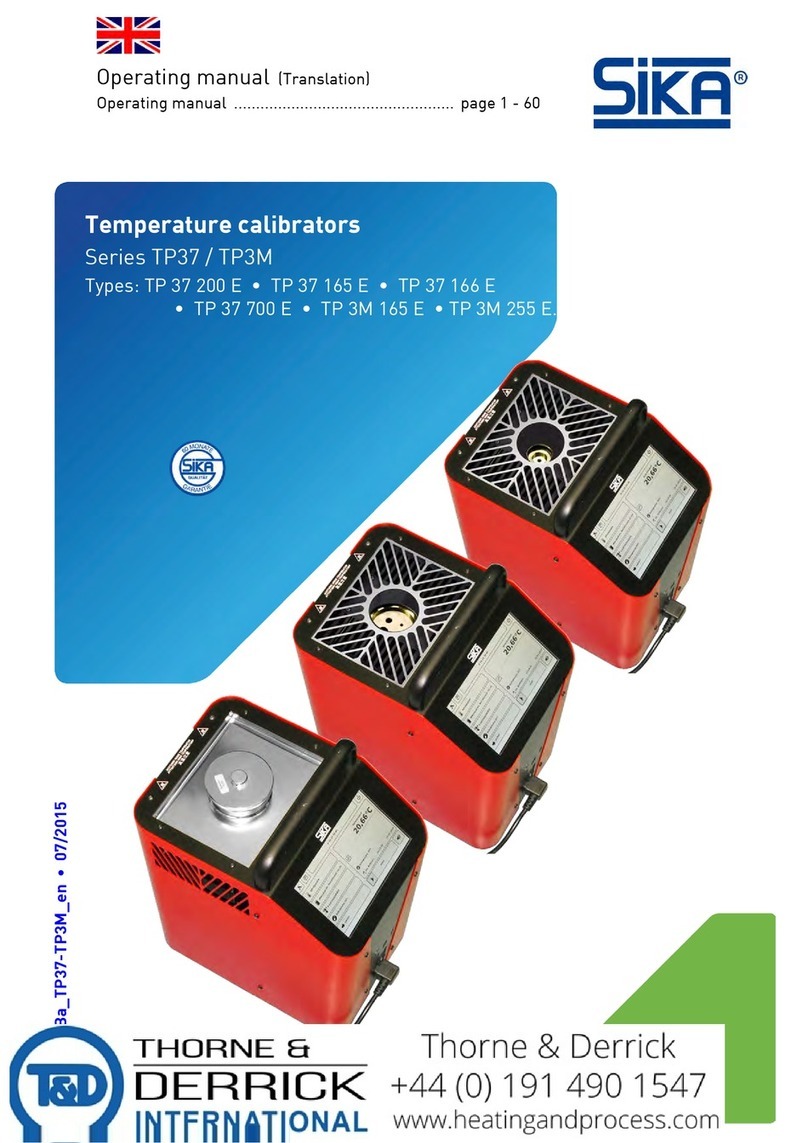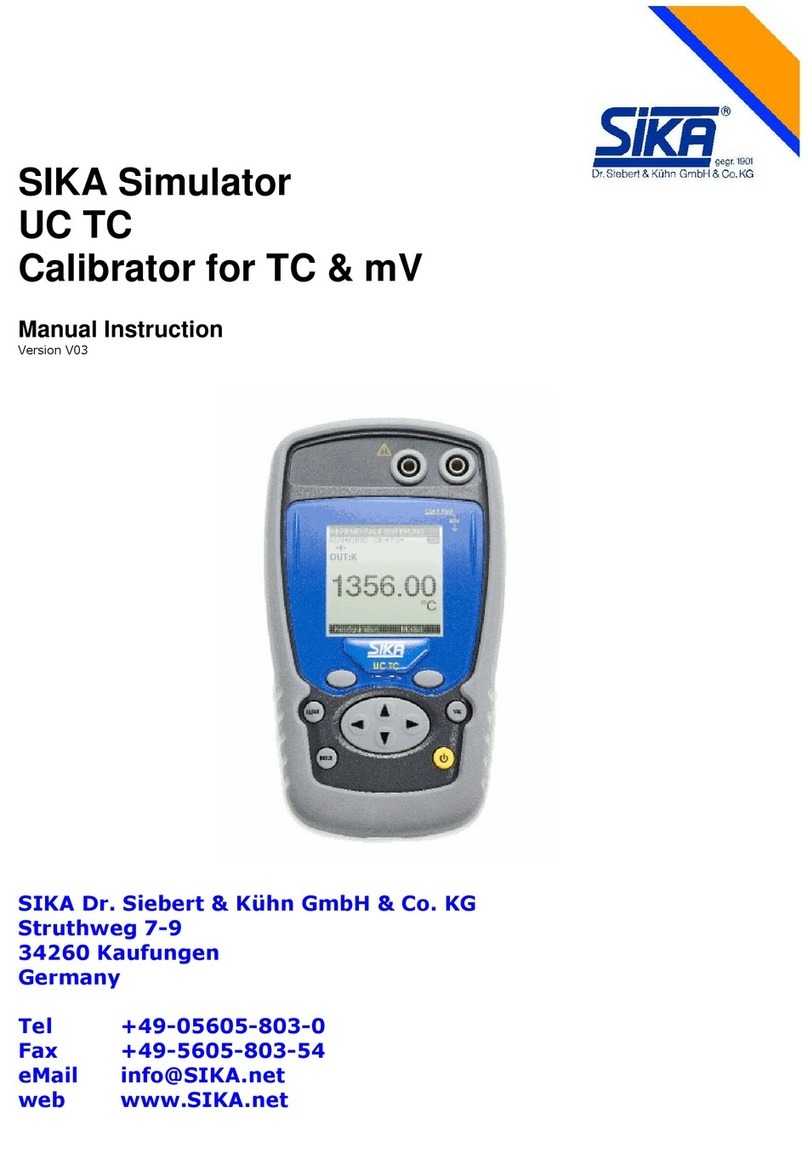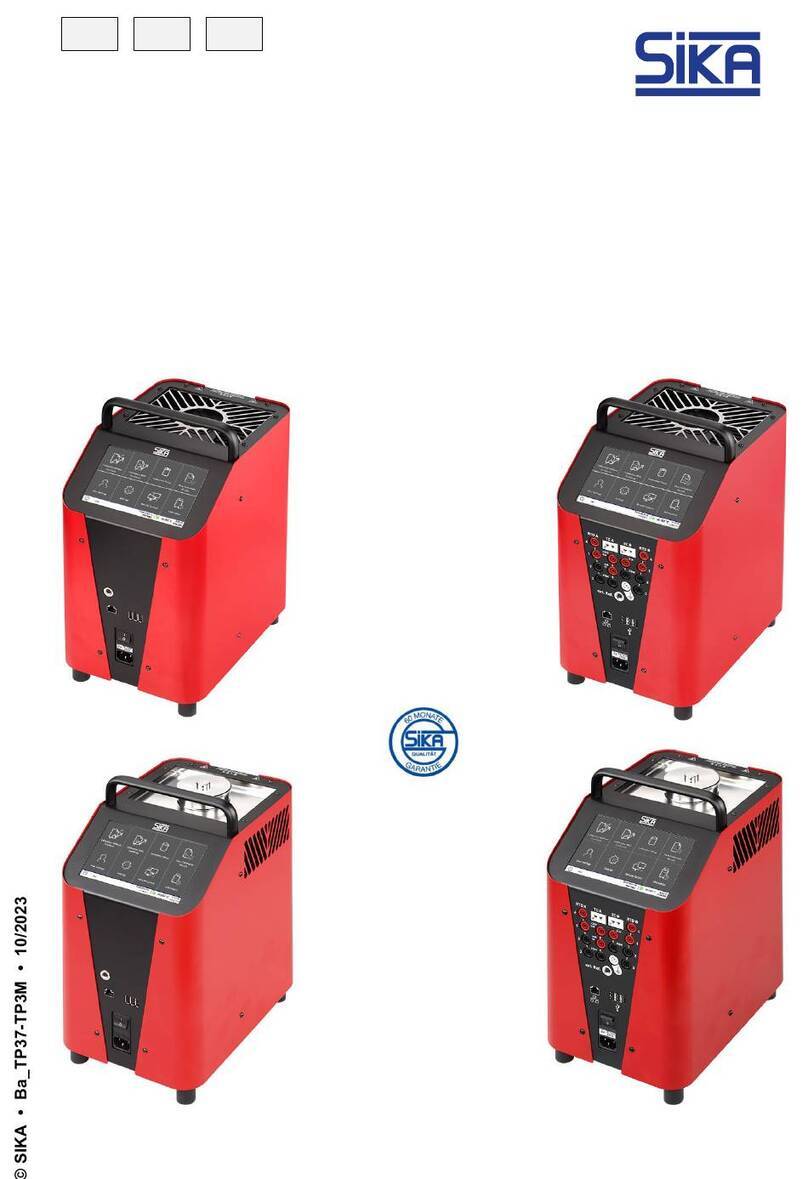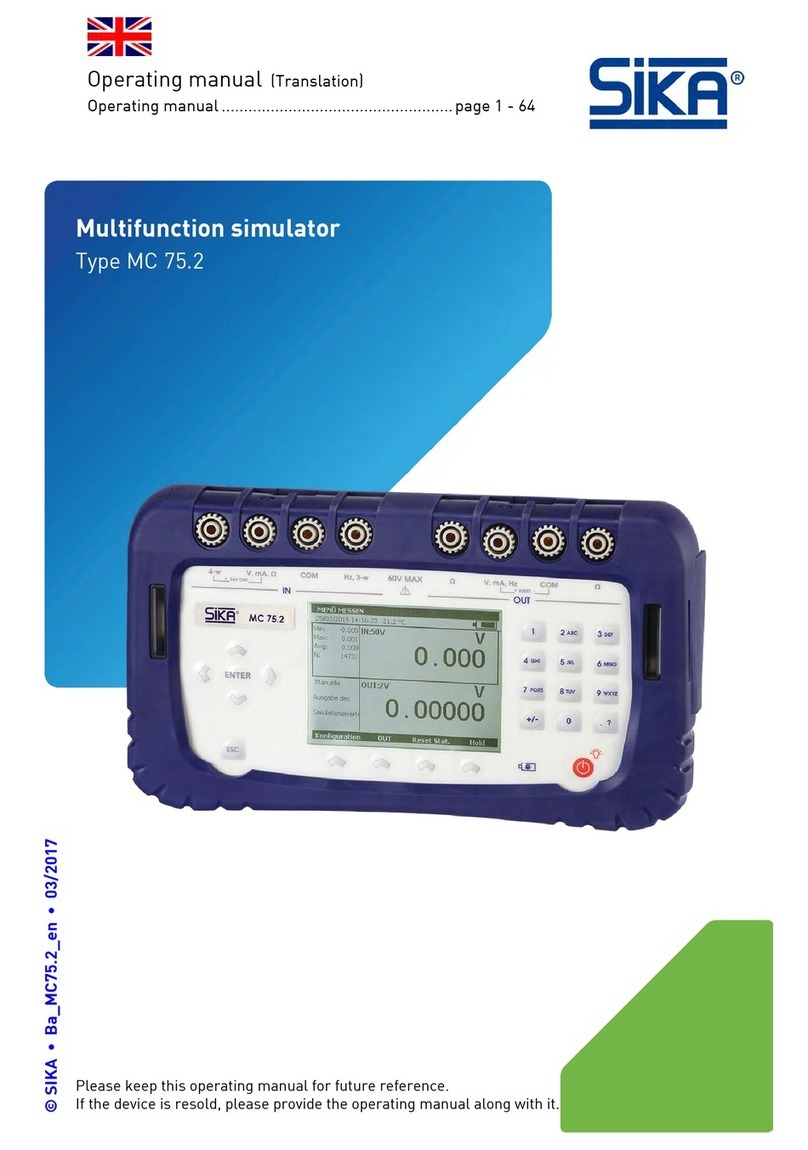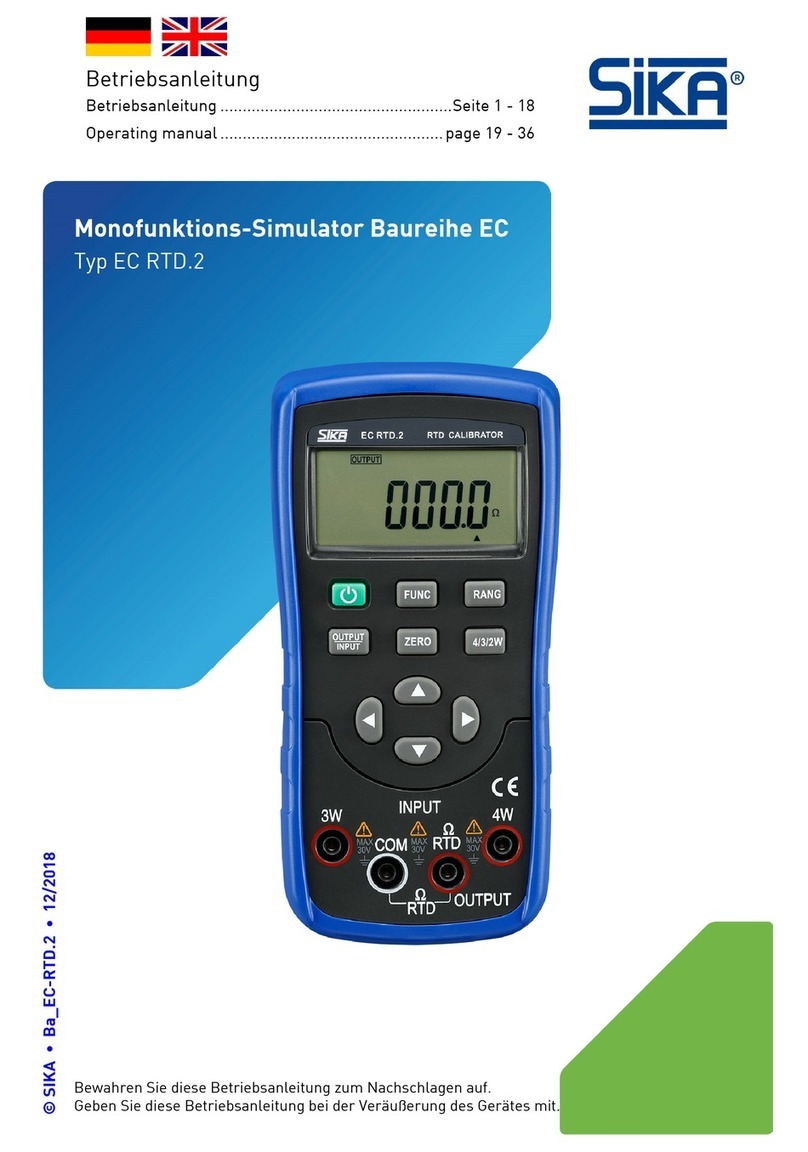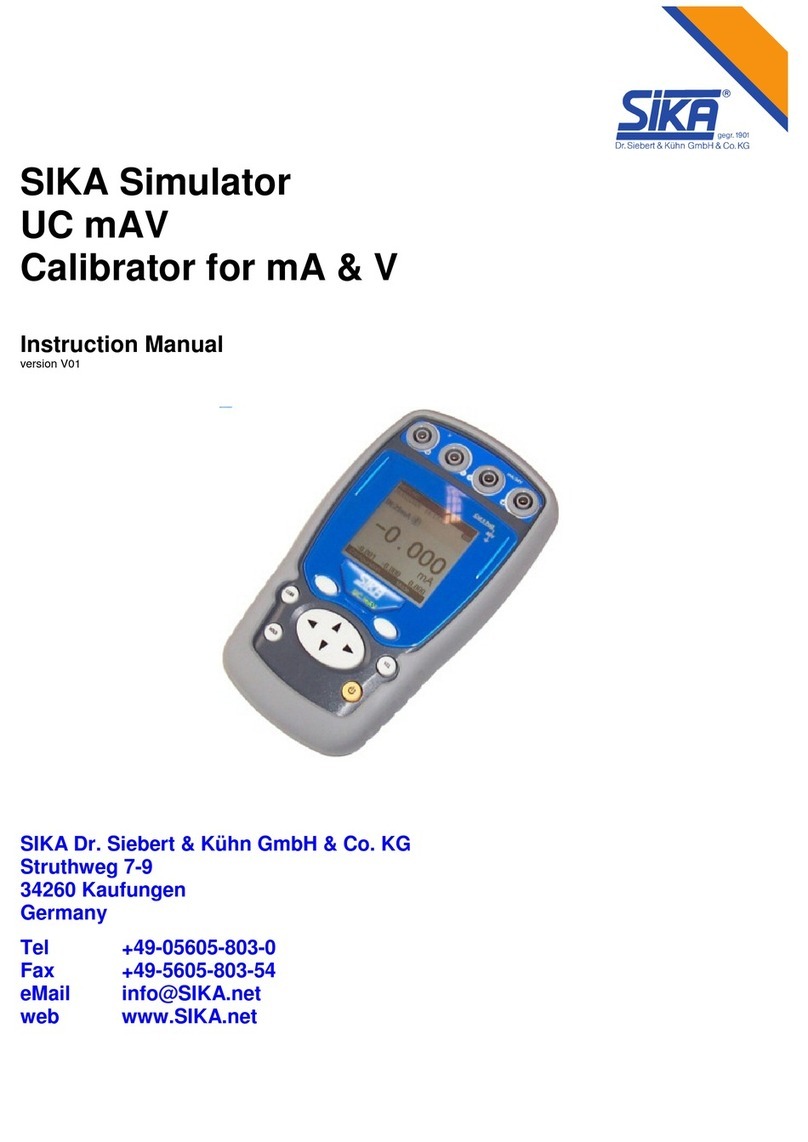TP17 / TPM
- 2 - © SIKA • Ba_TP17-TPM_en • 01/2016
Table of contents page
0About this operating manual.........................................................................................4
1Device description .........................................................................................................5
1.1 Delivery, unpacking and accessories .........................................................................6
1.2 Intended use................................................................................................................7
1.3 Warranty......................................................................................................................7
1.4 Exclusion of liability ....................................................................................................8
2Safety Instructions ........................................................................................................8
2.1 Safety instructions for the application of calibration liquids ...................................10
3Construction and function...........................................................................................11
3.1 Construction..............................................................................................................11
3.2 Functions...................................................................................................................12
3.3 Data interface (S versions)........................................................................................12
4Commissioning and operation ....................................................................................14
4.1 Operating conditions .................................................................................................14
4.2 Electrical connection ................................................................................................15
4.3 Preparation of the calibrator ....................................................................................16
4.3.1 Dry block calibrator ..............................................................................................17
4.3.2 Calibrator for infrared thermometer ...................................................................18
4.3.3 Calibrator for surface temperature sensors .......................................................19
4.3.4 Micro bath calibrator ............................................................................................20
4.4 Switching on, cool down and switching off ...............................................................24
4.5 Operating modes.......................................................................................................25
5Operation .....................................................................................................................26
5.1 Control elements of the controller (controller type K32SK) ....................................26
5.2 Calibration (calibration mode) ..................................................................................27
5.2.1 Display of reference and set temperature ...........................................................27
5.2.2 Display of temperature control ............................................................................27
5.2.3 Display of fan/ cooling control..............................................................................28
5.2.4 Display of heating / cooling capacity and operating duration..............................28
5.2.5 ConF menu............................................................................................................28
5.3 Set a temporary set temperature (set point mode)..................................................29
5.4 Main menu.................................................................................................................30
5.4.1 Automatic control .................................................................................................32
5.4.2 Manual control......................................................................................................33
5.4.3 Set point memory (S version) ...............................................................................34
5.4.4 Gradient control / temperature profile (S version) ..............................................35












